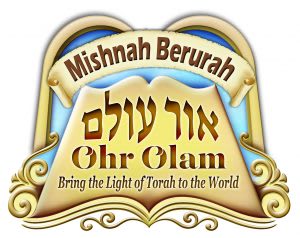Driving Home After Responding to an Emergency

Question: Is it permitted for a doctor [or a Hatzalah member or other emergency responders] to drive his car back home once he is finished with a life-saving mission?
Discussion: At first glance, Shulchan Aruch seems to permit them to do so. In Chapter 329:9 Shulchan Aruch appears to rule that it is permitted for those who responded to an emergency, e.g. to save a ship or vessel in distress, to evacuate residents who are threatened by an overflowing river, or to assist an individual whose life is being threatened by people or animals, to return home after the life-saving mission is completed. Shulchan Aruch adds that they are also permitted to carry their weapons with them, which otherwise would be forbidden min ha-Torah as it would be transgressing the melachah of Carrying. Mishnah Berurah, quoting the Rambam, explains that this is a unique leniency for emergency responders, since Chazal were concerned that if emergency responders would be restricted from returning home once their task is finished145, they will no longer be motivated to respond to a future emergency, thus perhaps endangering lives in the future. According to this explanation, Chazal permitted to desecrate min ha-Torah Shabbos prohibitions in order to make certain that there will always be enough people willing to respond to future emergencies. If so, it would be permitted for a doctor or any emergency responder to drive their car home after their life-saving mission is completed.
But this ruling of the Shulchan Aruch seems to contradict a ruling of the Shulchan Aruch elsewhere. In Chapter 407:3, Shulchan Aruch rules that emergency responders may leave the emergency area but can only walk up to 2000 amos in each direction146. Shulchan Aruch adds that if the responders find themselves in an area which is controlled by non-Jews147 and they are afraid to remain in the emergency area, then they may walk [with their weapons] until they find a safe area. It follows therefore, then when the responders do not feel unsafe, they may not desecrate min-ha-Torah Shabbos prohibitions in order to return home. If we follow this ruling, then in most cases doctors or Hatzalah members will not be permitted to drive their car home148, except in a situation where they find themselves in an unsafe neighborhood and afraid to remain alone in that area.
Many early poskim rule stringently on this issue. They explain that although the rulings of the Shulchan Aruch appear contradictory, the truth is that the Shulchan Aruch in Chapter 329 was just issuing a terse ruling that first responders my return to their place, but only as qualified in Chapter 407, which is only if they find themselves in an unsafe area where they fear for their lives149. According to this opinion, the “motivation for the future” concept only permits responders to transgress miderabanan prohibitions but does not give them free reign to transgress min ha-Torah prohibitions. Accordingly, it would be permitted for a non-Jew to drive the doctor or Hatzalah member home, since that would only be a transgression of amirah l’akum, but it is forbidden for the responders to drive themselves home. Since many contemporary poskim agree with this stringent ruling150, most Hatzalah organizations around the world follow this ruling and arrange for their members to be picked up by a non-Jew once the responder is ready to return home. If a non-Jew is not available, and the area is a safe, and the doctor or responder is not needed at another emergency call, they would need to remain in the area for the duration of Shabbos. A very uncomfortable position to be in.
But there are many poskim who disagree with this stringent ruling. They maintain that if we do not allow responders to return home under all circumstances we will severely undermine the chance that they will respond in the future. They view this potential problem to be safek pikuach nefesh, and feel that the Shulchan Aruch would permit transgressing Torah prohibition in order to avoid this potentially catastrophic situation151. Several contemporary poskim152, including Rav Moshe Feinstein153 essentially agree with this approach and permit Hatzalah members to drive home after completing a life-saving mission, if a non-Jew is not available to take them154. Some Hatzalah organizations follow the more lenient view and permit the members to drive home when a non-Jew is not available.
145. Or even if they would be allowed to return home but would be restricted from taking their weapons with them.
146. Note that under normal circumstances this, too, would be forbidden, since it is forbidden miderabanan for one who left his techum Shabbos to continue walking more than 4 amos. But in this case, since Chazal were interested to encourage people to respond to emergencies, they suspended the restriction and permitted responders to move around up to 2000 amos in every direction.
147. Or in a bad neighborhood which is crime-ridden or otherwise unsafe.
148. Unless, of course, they are needed, or may be needed, to be available to respond to another emergency on that Shabbos.
149. Shulchan Aruch ha-Rav 329:9; Chayei Adam 76:32; Aruch ha-Shulchan 407:3. This may be the opinion of Mishnah Berurah as well; see 329:21.
150. Har Tzvi, O.C. 2:10, Minchas Shelomo 1:7-3; 1:8; 2:29-6 (See also Shulchan Shelomo 329:17); Tzitz Eliezer 21:59; Rav Y.S. Elyashiv (quoted in Yisa Yosef 1:76; 3:81) Shemiras Shabbos K’hilchasah 40:81.
151. She’als Yaavatz 1:132; Chasam Sofer O.C. 203; C.M. 194; Chazon Ish (oral ruling quoted in Orchos Rabbeinu, vol. 1, pg. 155).
152. See Devar Yehoshua 3:69; Shevet ha-Levi 6:26; 8:87; Kinyan Torah 4:39; Chut Shani 90:7.
153. Igros Moshe, O.C. 4:80.
154. Igros Moshe, O.C. 5:25.
